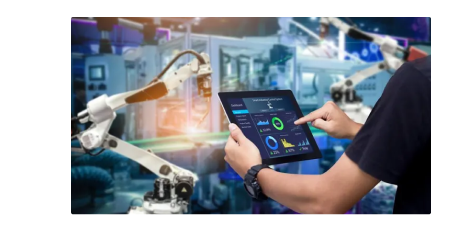#TakeCharge with #Aimshala
How make a career in Plastics Design Engineer (R&D)
A career as a Plastics Design Engineer (R&D) in the textiles industry involves developing innovative plastic materials and designs for various applications, including clothing, packaging, and industrial uses. To pursue this career, individuals typically need a strong academic background in materials science, polymer engineering, or a related field. A bachelor's degree is essential, followed by potential specialization through master's or doctoral programs. Gaining practical experience through internships, research projects, or working in design settings enhances employability. Networking with professionals in the field and staying updated with the latest advancements in polymer technologies and sustainable practices are also crucial. With a blend of education, experience, and passion for materials science, one can build a rewarding career dedicated to advancing plastic design in textiles.
Career in Plastics Design Engineer (R&D)
What are the roles and responsibilities in Plastics Design Engineer (R&D)?
- Conducting Research : Plastics Design Engineers conduct research to develop new materials and improve existing plastic formulations for various applications.
- Design Development : They create and refine designs for plastic products, ensuring they meet industry standards and customer requirements.
- Testing and Analysis : Plastics Design Engineers perform tests on materials and products to assess their performance, durability, and compliance with safety regulations.
- Collaboration with Cross-Functional Teams : They work closely with product managers, marketing teams, and manufacturing personnel to ensure successful product launches.
- Sustainability Initiatives : Many Plastics Design Engineers focus on developing sustainable materials and practices to reduce environmental impact.
What education is required to study Plastics Design Engineer (R&D)
Check out the dates of the total number of candidates who have appeared in the CUET 2022 exam from the below table.
Stream |
Graduation |
After Graduation |
After Post Graduation |
|
|
Path 1 |
Completion of high school with a focus on science subjects such as chemistry, physics, and mathematics. |
Bachelor of Science in Materials Science, Polymer Engineering, or related fields. |
Master's degree in Materials Science, Polymer Engineering, or specialized fields such as Plastics Technology. |
Ph.D. in Materials Science or Polymer Engineering for those pursuing research or academic careers. |
|
Path 2 |
Completion of high school with emphasis on vocational training in materials or engineering. |
Bachelor's degree in Textile Engineering or Polymer Technology. |
Master's degree in Textile Engineering, Polymer Engineering, or related fields. |
Certifications in specialized plastic design or sustainable materials practices. |

Feeling unsure about
your future?
Let's find the perfect career path for you!
with AI-powered career
guidance

What are the key skills required for Plastics Design Engineer (R&D)
- Analytical Skills - These skills are crucial for interpreting data and making informed decisions based on research findings.
- Communication Skills - Effective communication is vital for sharing research results with stakeholders and collaborating with cross-functional teams.
- Creativity in Design - The ability to innovate and create functional designs that meet market needs is essential for success.
- Technical Skills - Proficiency with design software and laboratory equipment is important for conducting experiments and creating prototypes.
- Project Management Skills - Managing design projects efficiently, including budgeting and timelines, is key to successful outcomes in plastics design.
What are the career opportunities in Plastics Design Engineer (R&D)?
- Materials Scientist - Materials Scientists study and develop new materials, focusing on improving performance and sustainability.
- Polymer Chemist - Polymer Chemists specialize in the chemical properties of polymers and develop new plastic formulations.
- Product Development Engineer - Product Development Engineers design and develop new products, ensuring they meet market demands and safety standards.
- Sustainability Consultant - Sustainability Consultants advise companies on eco-friendly practices and materials to reduce environmental impact.
- Quality Control Engineer - Quality Control Engineers ensure that products meet quality and safety standards through rigorous testing and analysis.
What is the salary and demand for Plastics Design Engineer (R&D)?
- Salary Overview - The typical salary for Plastics Design Engineers ranges from $55,000 for entry-level positions to over $120,000 for experienced professionals, with variations based on education and location.
- Regional Salary Variations - Salaries can vary significantly by region; for example, Plastics Design Engineers in urban areas or regions with a strong manufacturing base may earn more than those in rural settings.
- Current Job Market Demand - The demand for Plastics Design Engineers is growing due to advancements in materials technology, sustainability initiatives, and the expanding applications of plastics in textiles.
- Future Demand Projections - Future demand for Plastics Design Engineers is expected to rise as industries increasingly focus on innovative materials and sustainable practices.
Leading companies for careers in Plastics Design Engineer (R&D)

BASF

DuPont

3M

Eastman Chemical Company

Covestro

SABIC

Huntsman Corporation

Mitsubishi Chemical
What are the best colleges for Plastics Design Engineer (R&D) in India?
Undergraduate
College |
Location |
Website |
|
Indian Institute of Technology, Delhi |
New Delhi |
https://www.iitd.ac.in |
|
National Institute of Fashion Technology |
New Delhi |
https://www.nift.ac.in |
|
Anna University |
Chennai |
https://www.annauniv.edu |
|
Manipal Institute of Technology |
Manipal |
https://manipal.edu/mite.html |
|
Indian Institute of Technology, Kharagpur |
Kharagpur |
https://www.iitkgp.ac.in |
Postgraduate
College |
Location |
Website |
|
Indian Institute of Technology, Mumbai |
Mumbai |
https://www.iitb.ac.in |
|
National Institute of Fashion Technology, Bengaluru |
Bengaluru |
https://www.nift.ac.in/bengaluru |
|
Indian Institute of Technology, Chennai |
Chennai |
https://www.iitg.ac.in |
|
Indian Institute of Technology, Roorkee |
Roorkee |
https://www.iitr.ac.in |
|
Indian Institute of Technology, Kanpur |
Kanpur |
https://www.iitk.ac.in |
What are the best colleges for Plastics Design Engineer (R&D) in Abroad?
College |
Location |
Website |
|
Massachusetts Institute of Technology |
Cambridge, Massachusetts, USA |
https://www.mit.edu |
|
Stanford University |
Stanford, California, USA |
https://www.stanford.edu |
|
University of Cambridge |
Cambridge, United Kingdom |
https://www.cam.ac.uk |
|
ETH Zurich |
Zurich, Switzerland |
https://ethz.ch |
|
University of California, Berkeley |
Berkeley, California, USA |
https://www.berkeley.edu |
What are the top entrance exams in India for pursuing a career in Plastics Design Engineer (R&D)
College |
Tentative Date |
UG/PG |
Important Elements |
Website |
|
Indian Institute of Technology, Delhi |
May |
Postgraduate |
Engineering Mathematics, General Knowledge, and English. |
https://www.iitd.ac.in |
|
National Institute of Fashion Technology |
June |
Undergraduate |
Design Aptitude, General Knowledge, and English. |
https://www.nift.ac.in |
|
Anna University |
April |
Postgraduate |
Engineering Mathematics, General Studies, and English. |
https://www.annauniv.edu |
|
Manipal Institute of Technology |
July |
Undergraduate |
Physics, Chemistry, and Mathematics. |
https://manipal.edu/mite.html |
|
Indian Institute of Technology, Kharagpur |
June |
Postgraduate |
Engineering Mathematics, General Knowledge, and Analytical Skills. |
https://www.iitkgp.ac.in |
Pros & Cons of a Career in Plastics Design Engineer (R&D)
Pros
- Plastics Design Engineers play a critical role in advancing materials technology, which can lead to innovative products and solutions.
- The field offers competitive salaries, particularly for those with specialized skills and experience.
- Professionals contribute to sustainability efforts by developing eco-friendly materials and practices.
- The career provides opportunities for continuous learning and engagement with cutting-edge technology.
Cons
- The job can be demanding with long hours, especially during project deadlines or product launches.
- Some roles may require extensive travel to manufacturing sites, which can be physically taxing.
- Funding uncertainties in research projects can lead to job instability or limited resources.
- The work can sometimes be isolating, especially for those engaged in extensive laboratory or field research.
Did you find this information helpful?


Report
0 out of 0 found this helpful


